How much sun will I get today?
TL;DNR
Here's a graph of how much sun you will get today by hour of the day and relative to the amount you would get on the longest daytime of the year.
The UV Index is a standardized scale that measures the strength of the sun’s ultraviolet (UV) radiation at a particular place and time. It’s designed to help you understand the potential risk of skin damage so you can take protective measures.
Here’s the breakdown:
| UV Index | Risk Level | Recommendations |
|---|---|---|
| 0–2 | Low | Minimal protection needed |
| 3–5 | Moderate | Wear sunglasses, consider sunscreen |
| 6–7 | High | Use SPF 30+, hat, sunglasses, seek shade |
| 8–10 | Very High | Extra protection, avoid midday sun |
| 11+ | Extreme | Take all precautions; minimize sun exposure |
The Different Types of UV
Let's start by taking about the different types of UV light. Of the UV light that reaches the ground, UVA (315-400 nm) makes up roughly 90% by number of photons because it is only weakly absorbed by the ozone. UVB (280-315 nm) is a much smaller fraction (roughly 10%), but each UVB photon is far more biologically effective — hundreds of times more likely to cause sunburn, DNA damage, and skin cancer. And the third type, UVC (<280 nm) is entirely absorbed by the atmosphere. Therefore, the rest of this article will focus on UVB.
The Effect of Latitude
Let's begin by looking at the effect of latitude on the amount of UVB reaching the earth. We'll normalize things by assuming the day is March 21 or September 21 (i.e., the equinox) - placing the sun directly over the equator. This produces the graph below showing a sinusoidal slope from 100% at the equator to near 0 just before 80° (because of the exponential UVB loss due to the atmosphere). If you want to avoid UV radiation, move north!
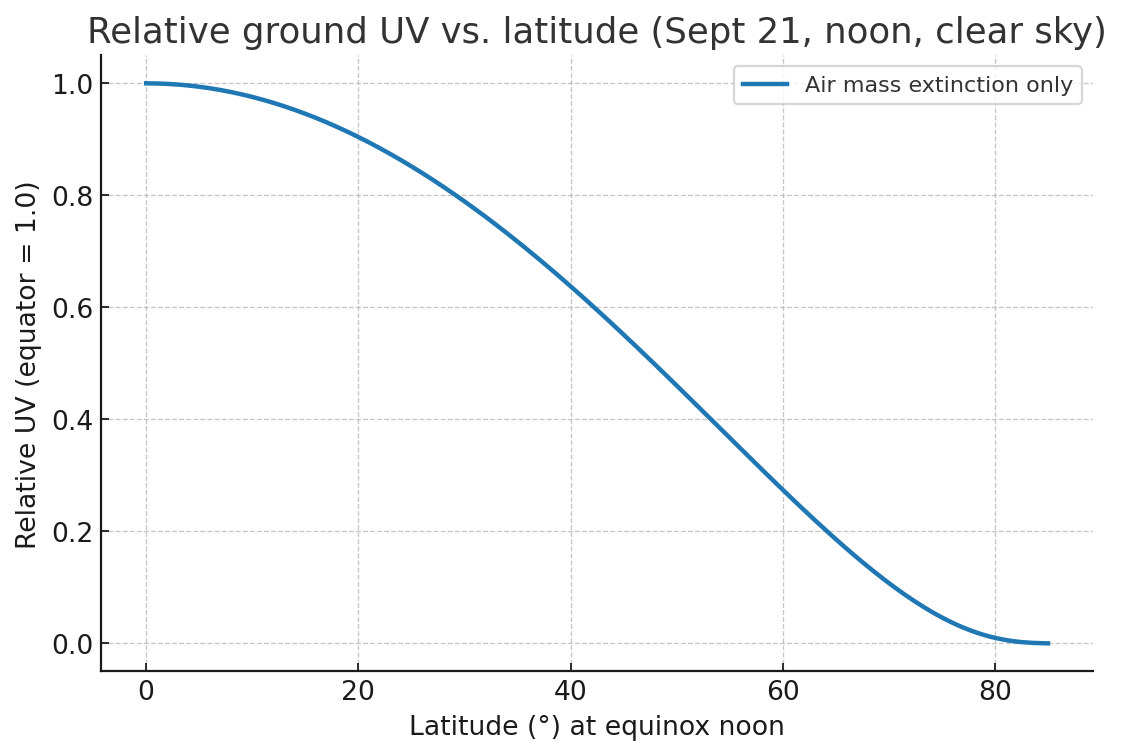
Absorption vs. Reflection to Space
You might think that UVB would reflect off the atmosphere back into outer space like light reflects off a mirror, and, therefore, UVB would reflect off the atmosphere to a much greater extent at higher angles of incidence (i.e., at higher latitudes), but that is not the case, for the most part. Some reflection does occur but it remains a secondary loss compared to absorption along the longer slant path.
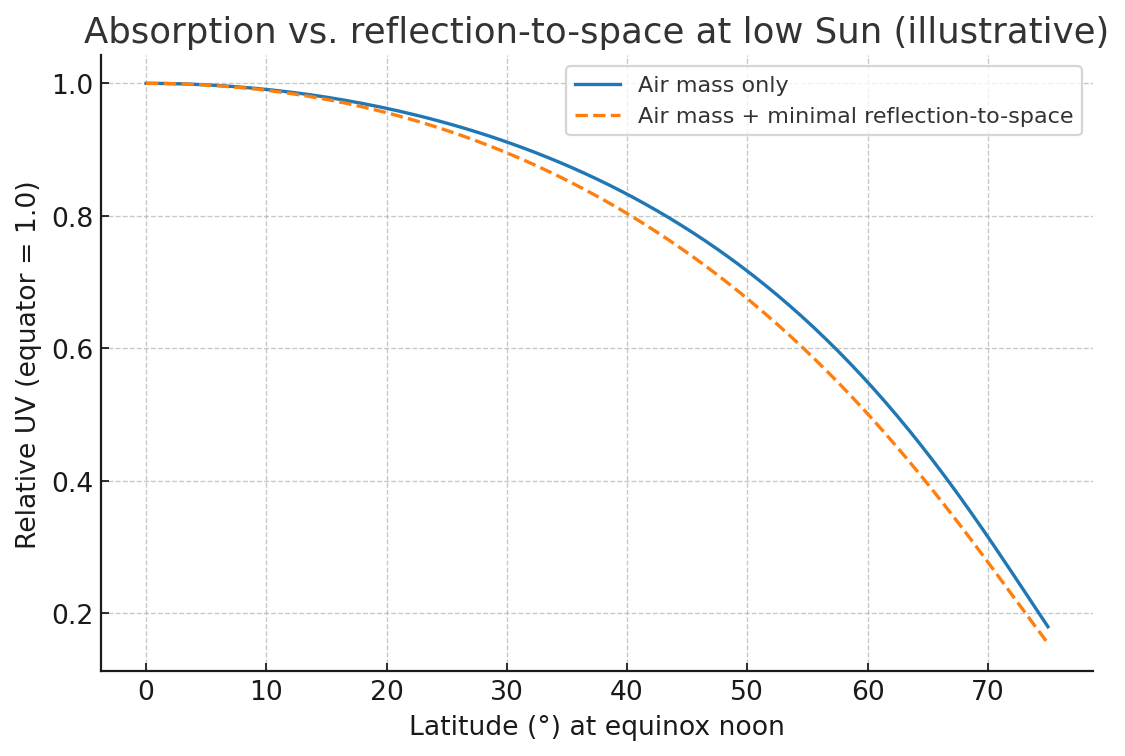
Time of Day
As you'd expect, the time of day has a big effect on the UVB reaching the earth. Relative UVB climbs steeply to solar local high noon (when the sun is highest in the sky where you located) and falls quickly in the afternoon. At higher latitudes, the midday window becomes narrower, but the shape is the same. Note that at +/- 2 hours from local solar noon, the UVB is at about 70%, at 2.5 hours it's closer to 55%, and at +/- 3 hours its down to 35%.
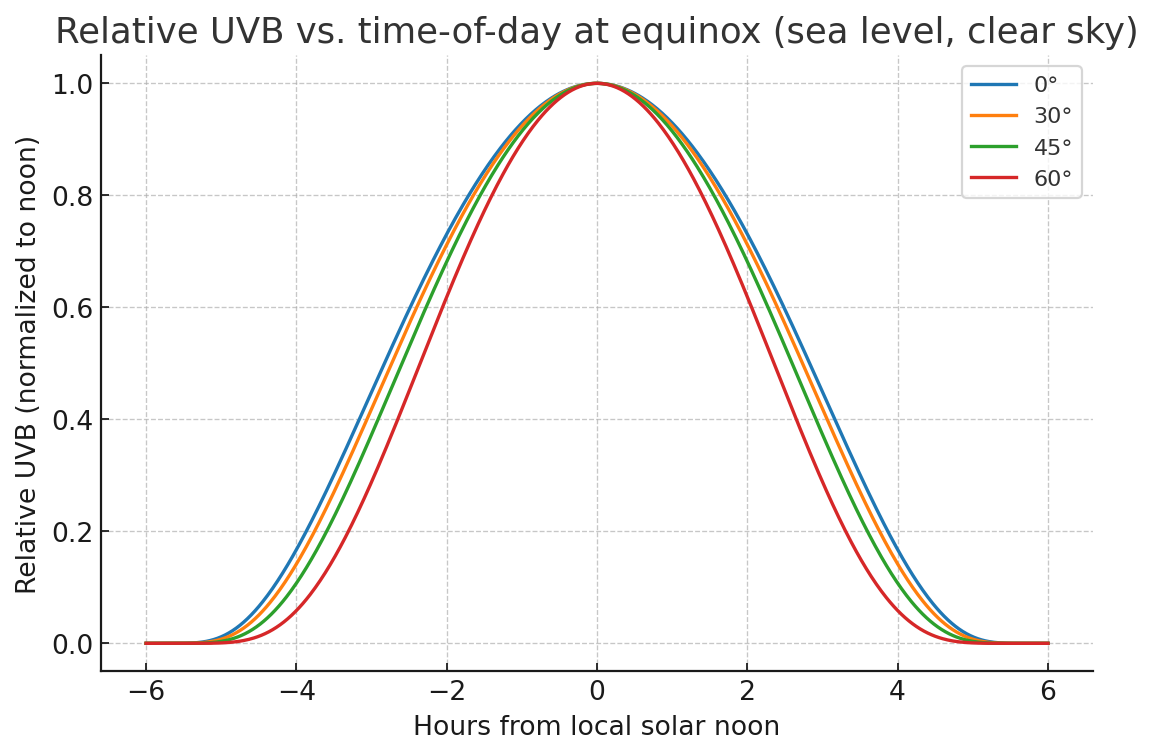
Day of the Year
Again, as expected, the day of year has a big effect on the UVB reaching the earth. Relative UVB climbs steeply from the winter solstice (December 21) to the summer solstice (June 21) and falls quickly in the fall - following a sinusoidal pattern with the equinox dates at approximately 65%.The overall UVB reaching the earth is also affected by the change in the thickness of the ozone layer which can change by 10 to 20% in the mid latitudes - becoming thicker in winter/spring and thinner in summer/fall. The orange dashed line in the graph below adds the effect of the thickness of the ozone layer to the effect for the latitude of San Francisco (38°N).
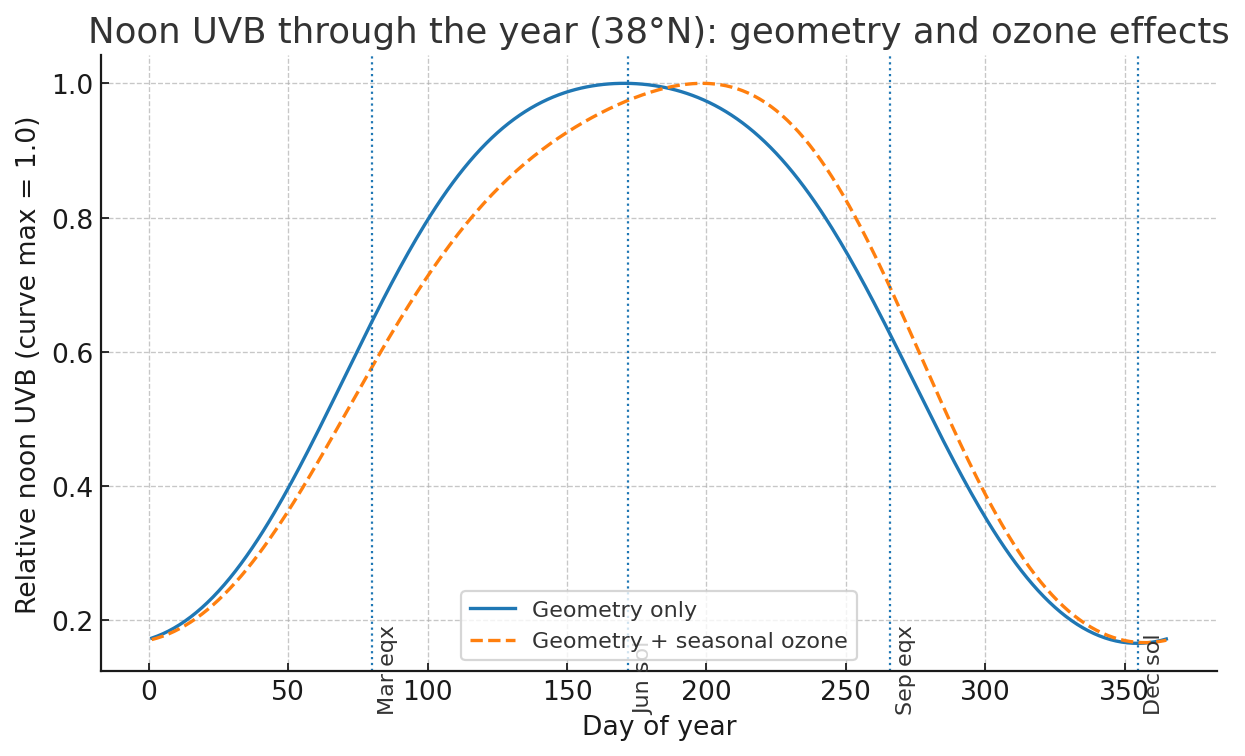
Increased UVB while Sailing
The glare off the water, the wide open sky, and the bright white deck of a sailboat on the San Francisco Bay can increase your exposure to UVB by approximately 20% (more or less). The blue line in the graph below is the nominal UVB near San Francisco on land in a relatively open space (e.g., Crissy Field) on March 21. The orange line shows one possible level of increase while sailing on the bay.
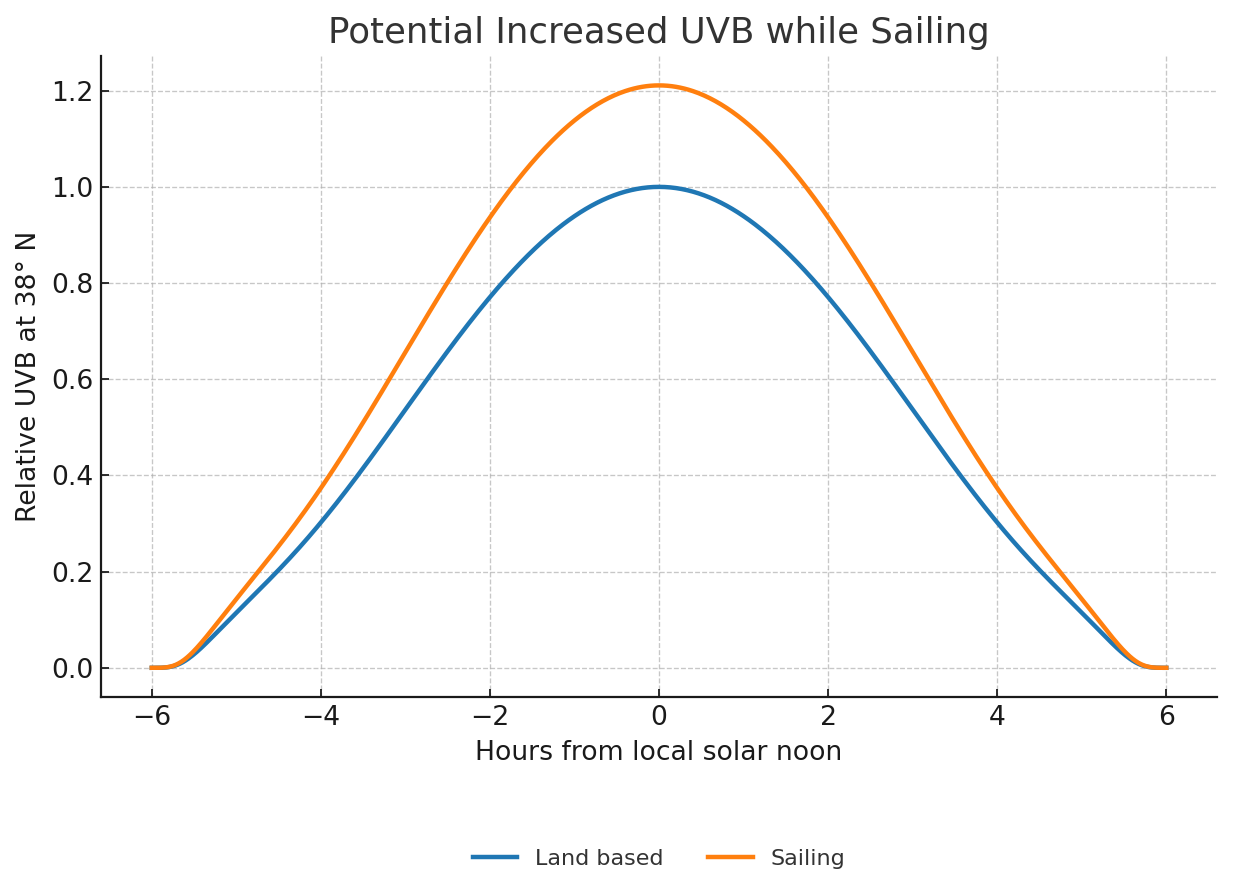
Clouds
Thick, uniform overcast clouds (stratus, nimbostratus) can block 50–80% of UVB because UVB is strongly scattered and absorbed by water droplets. Other cloud types and partly cloudy days often do not block a significant amount on average. Interestingly, for broken/partly cloudy conditions the periods of full shade, full sun, and the short-lived cloud-edge enhancement of the sun (when radiation can be magnified by ~10–30% for a few minutes) tend to average out to the same levels as the clear sky values over time. Therefore only uniform overcast clouds matter.
Underwater
UVB is attenuated rapidly by water. Typical UVB attenuation in clear pools and lakes yields a 63–82% reduction in transmission at ~8 inches in depth; in turbid or colored water, the reduction is even greater. So, basically, any skin that is underwater is not a factor.